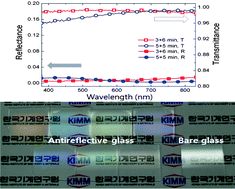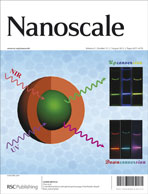Improved antireflection properties of moth eye mimicking nanopillars on transparent glass: flat antireflection and color tuning†
Abstract
The sub-wavelength structures in moth eyes exhibit fascinating antireflective properties over the broadband wavelength region and at large incident angle by generating an air-mixed heterogeneous optical interface. In this work, antireflective behavior of transparent glass is observed with the elaborate controls of the nanopillar morphology. The


 Please wait while we load your content...
Please wait while we load your content...